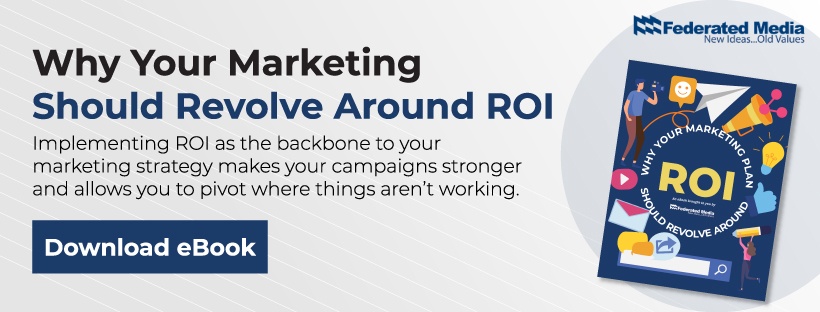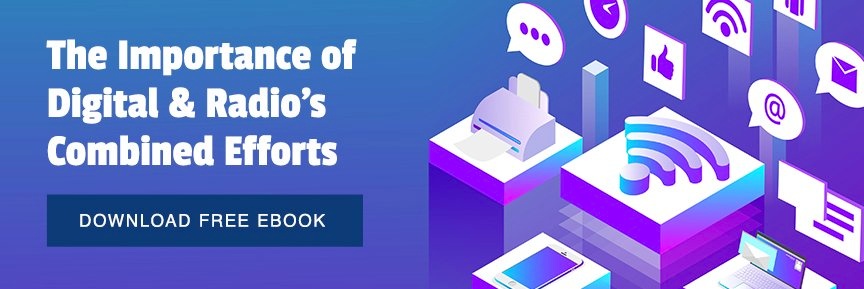Every time you turn on a cable channel, you likely see a commercial for a product sold by a Fortune 500 company or one of its subsidiaries. Anyone selling a competing product likely wonders how to compete with a company whose brand is all over television and the Internet, as well as highways across the nation. It's challenging to be sure, but not impossible. To compete effectively with large corporations, you must maximize your ad budget through strategic ad buys to get the biggest possible return on investment (ROI). Otherwise, you'll lose out on opportunities to attract and convert consumers, which will hurt your bottom line and could put you out of business.
It's a simple formula for success, but not one that is easy to do. To get started, you must first understand the various ways you can maximize your marketing budget.
Pick And Choose Where To Advertise
Large corporations have the financial resources to blanket the airwaves with ads of all types. This mass-market approach allows corporations the freedom to be less precise with their advertising and still consistently attract new consumers. However, as a small business owner, you must recognize you don't have the same luxury. Some small businesses try to stretch their ad budgets by spending all of it on the largest amount of ad time they can on every channel available. But when they do, they aren't usually able to air them enough on each platform for the consumer to recall them.
To compete effectively, you should start with a small group of channels your target audience will most likely consume. Start with traditional broadcast channels, like radio, that can reach local audiences, then pair them with digital ads for more impact. Focus your efforts on optimizing those ads, either by refining the creative, adjusting the air or display times, or calibrating your tracking tools. When your ads are performing well on those specific channels, then expand their runtime. You'll gain more traction with consumers with several memorable and frequent ads on specific channels than with infrequently aired ones on every channel. You'll also get a higher return on your marketing dollars.
Learn Who Your Audience Is
To pick the proper channels to advertise, you need to understand who your audience is. You also must understand your audience to craft creative content that is persuasive to them. When you run compelling ads frequently, you'll entice more consumers to visit your website or come to your store, driving up your ROI.
If you're hands-on with clients, you may have a good sense of your customer's demographics and insights into why they buy your products. If you aren't public-facing, you can develop surveys to collect valuable data about who they are and why they buy what they buy from you. But these insights and data are not enough. You need to develop a target persona, which is a hypothetical composite of your ideal customer. Use the data you have, along with surveys of current customers, to create a persona that reflects your customer's needs, perceived and actual barriers to purchasing your product, how they believe this product will solve their problem, and how what evaluative criteria they use to make decisions. With that information, you can develop ads that will address their pain points and needs to air on the local media channels they're most likely to consume. That increases the chances they will see your ads and maximizes your marketing ROI.
Have A Social Media Presence
You may have seen headlines about large corporations making seven- and eight-figure social media ad buys. But the truth is that isn't necessary. You can boost your marketing ROI considerably simply through a simple social media plan. Start by establishing business pages on a few of your customers’ platforms and target consumers most often frequent. Then make sure to publish regular posts that highlight your business products, engage consumers with updates, and solicit feedback. Use your branded social media channels to respond to customer service inquiries, which can help you keep customers. By being consistent, authentic, and strategic when using it, social media can amplify your marketing efforts without eating into your ad spend.
While you can work marketing wonders for free with your branded social media channels, you should spend some money on ads targeting consumers in your local community. Social media allows you to micro-target the consumers who most closely resemble your target personas in your local community and remarket to consumers who have already interacted with your brand. These ads will outperform your non-paid efforts, driving more consumers to your business and improving your ROI.
Be Creative With Your Content
Stand out from the mass-marketing approach by being bold, authentic, and personable. Don't be afraid to let your personality or organizational culture shine through in your content. Consumers take in thousands of cookie-cutter ads each day and personality, along with striking visuals, personalized text, and creative concepts, helps your ads stand out. Speak directly to your target consumers. Educate, engage, and excite them. Make use of the unique aspects of each medium, such as the resonance of audio ads or the movement of animated digital ads, to cut through the marketing clutter. By developing unique and memorable content, you can significantly increase your marketing ROI.
Many small business owners earn a profit and grow their marketing share through strategic ad buys. By being selective with your advertising channels, understanding your target consumer, leveraging social media, and developing excellent ad content, you too can maximize your ROI and increase your revenue and profits. In doing so, you can set the stage for more organic business growth, which can help you compete with larger corporations and be successful.


